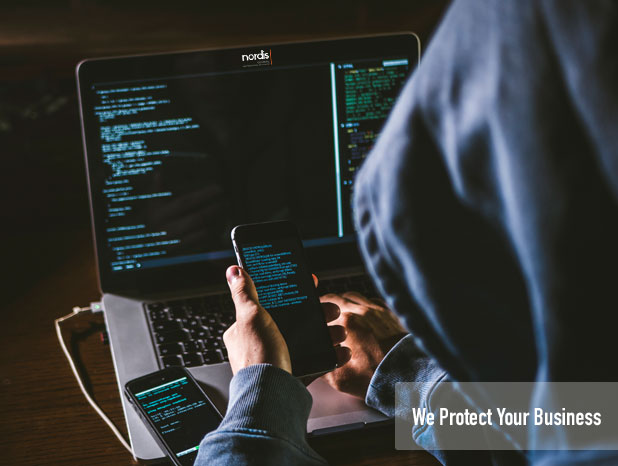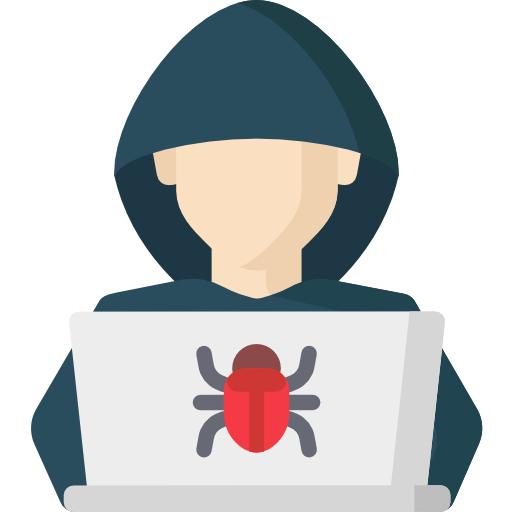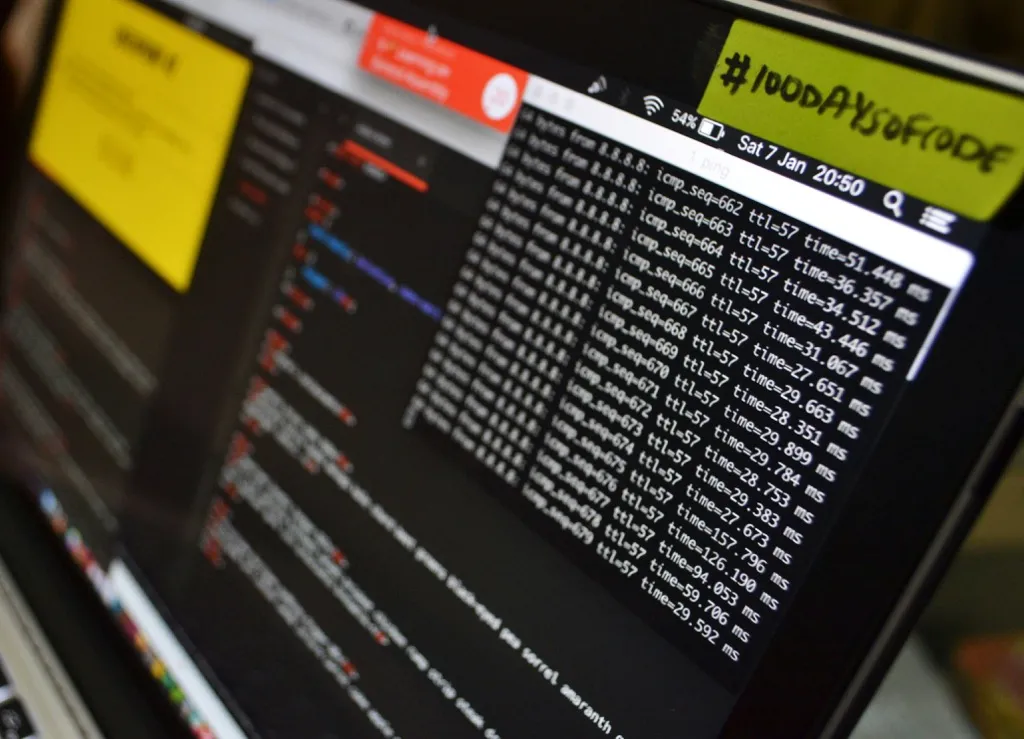Cyber Security Solutions
Cyber attacks are one of the most significant threats in today's world
And every company’s cyber security needs are different. We work meticulously for our clients and strive to offer them brand-independent, customized solutions.

Hardening
Analyzing your organization’s needs and taking measures to reduce risks against potential vulnerabilities.
Regular Scanning
Our monthly scanning service against vulnerabilities detected in critical IT Infrastructure and Systems.
Penetration Test
Controlling your information systems through the eyes of a white-hat hacker and reporting the found vulnerabilities to you.
Who Are We?
Nordis Global (Nord Information Security) is an information security company operating in both offensive and defensive fields since 2017. With the effort to conduct its business globally and with over 15 years of sector experience in the field of information technologies, it is an R zone company that aims to keep its product/brand-independent customers safe by trying to meet the ever-increasing cyber security needs.
- Information Security Trainings
- Cyber Security Services
- Hardening Services

Years of Cyber Security Experience

How Secure Are You Against Cyber Attacks? Cybercriminals’ attack methods are changing and developing day by day. Cyber Security measures must be taken simultaneously and up-to-date Cyber Defense information must be possessed. The Corporate Cyber Security Checklist below has been prepared by considering the most basic security issues in order to cope with cyber security deficiencies in a corporate structure.
- Creation of Authorized and Unauthorized Device Inventory
- Creation of Authorized and Unauthorized Software Inventory
- Hardenings of IT Software or Hardware
- Regular Vulnerability Scanning and Remediation of Occurring Vulnerabilities
- Regular Vulnerability Scanning and Remediation of Occurring Vulnerabilities
- Ensuring the Control of Privileged Users

Our risk management strategies and processes service You may not be sure whether an event is likely to occur. Also, you may not be sure what the consequences will be if it does. Probability, the likelihood of an event occurring, and consequence, the impact or outcome of an event, are the two components that characterize the magnitude of risk. All risk management processes follow the same basic steps, but sometimes different methods are used to describe these steps. These 4 risk management process steps together provide a simple and effective risk management process.
- Identification of Existing Risks
- Assess Your Risk and Determine the Risk Value
- Take Measures to Reduce Risk
- Monitor and Review the Risk

Ensuring Network Security Network Security Controls are used to ensure the confidentiality, integrity, and availability of network services. These security controls are technical or administrative security measures implemented to minimize security risk. To reduce the risk of a network being compromised, adequate network security requires the implementation of an appropriate combination of network security controls.
- Ensuring Access Controls
- Ensuring the Control of Authorizations
- Dividing Your Network into Segments
- Firewall and Anti-Virus Software Controls
- Logging and Tracking

Providing Monitoring and Security Audits The increasing number and complexity of malicious threats cause you to use more stringent security requirements and examine every aspect of your execution environment. Controls must be provided to provide monitoring and security audits that can determine whether a workload is running on trusted hardware or software in a known location.
- Unauthorized Access Controls
- Collection of Required Event Records
- Server Capacity Tracking
- Having an Accurate Backup Strategy

Minimizing Risks Cyber incidents are now just a part of our lifestyle. Even large, well-funded, and technically sophisticated organizations are struggling to keep up with the frequency and complexity of attacks. The question of a successful cyber attack against a business is not “if” but “when.”
- Incident Identification, Logging, and Classification
- Incident Notification and Problem Forwarding
- Investigation and Feedback
- Solution and Recovery
- Incident Closure

Ensuring Mobile Device Security Ideally, IT employees should at least be aware of every smartphone and tablet used in an organization from activation to end-of-life. Achieving this requires a consistent plan for mobile device management.
- Inventory classification
- Device inventory
- Inventory maintenance
- Physical tracking
Nordis Academy
Our training services, established to eliminate the vulnerability of trained human resources here, as cyber attacks increase day by day.

Ethical Hacker

Red Team

Blue Team

ISO 27001

Awareness
Cyber Security Starts with Awareness.


Our Expert Team
We help companies working with us to identify new business goals and then create a roadmap.

Davut

Asil

Neslinur

Sergen

Gürhan

Yusuf

Serkan

İrfan
Leave a Message and We Will Call You Back
Our team will get back to you via phone or email as soon as possible after receiving your message. Please do not forget to leave a phone number or email address in your message so that we can reach you.
4 Questions to Ask About Cyber Security
Do You Have a Proper Risk Management System to Minimize the Risk of Exposure to Attacks?
Applying risk management systems allows you to minimize your risks, but there are always unknown, unpredictable risks beyond your control, which is why it is not correct to talk about a 100% risk-free system. Risk management systems make it easier for you to monitor your risks by minimizing your risk levels. We are working to minimize your risks
Do You Take your Backups Off-Site and Check Them Periodically?
In addition to the location where your backups are taken, at least one copy should be sent to a different location. Recovering from backups is of vital importance in the event of a possible disaster or cyber attack. We recommend that critical systems be tested for recovery from backup at periodic intervals. When was the last time you performed a recovery from backup test?
Do You Patch 3rd Party Applications when Doing Patch Management?
In the developing internet world, patch management is one of the issues that needs to be given great importance on our systems. Attackers work at full speed to take over an application or operating system with a published vulnerability. Patch management should be adopted as a corporate culture and patches should be applied regularly. We report the vulnerabilities that occur in your system with regular vulnerability scans.
Are You Cyber Aware?
You have purchased firewalls to protect your organization, installed and configured antiviruses, and are doing patch management, but what about user awareness, the last link in the chain? When was the last time you received user awareness training? Are you cyber aware?

Test Your Knowledge in 4 Questions
Davut Eren, Founder
Our Latest Blog Posts
- Blog
- Uncategorized

The SMB Protocol uses data encryption for all Windows operating systems for file sharing, printer sharing, and Windows management to...

Cyber threats such as data breaches and ransomware attacks can cause businesses to suffer serious financial losses. The most secure...

Passwords form the first line of defense against unauthorized access to ensure your organization’s security. However, using strong passwords is...
